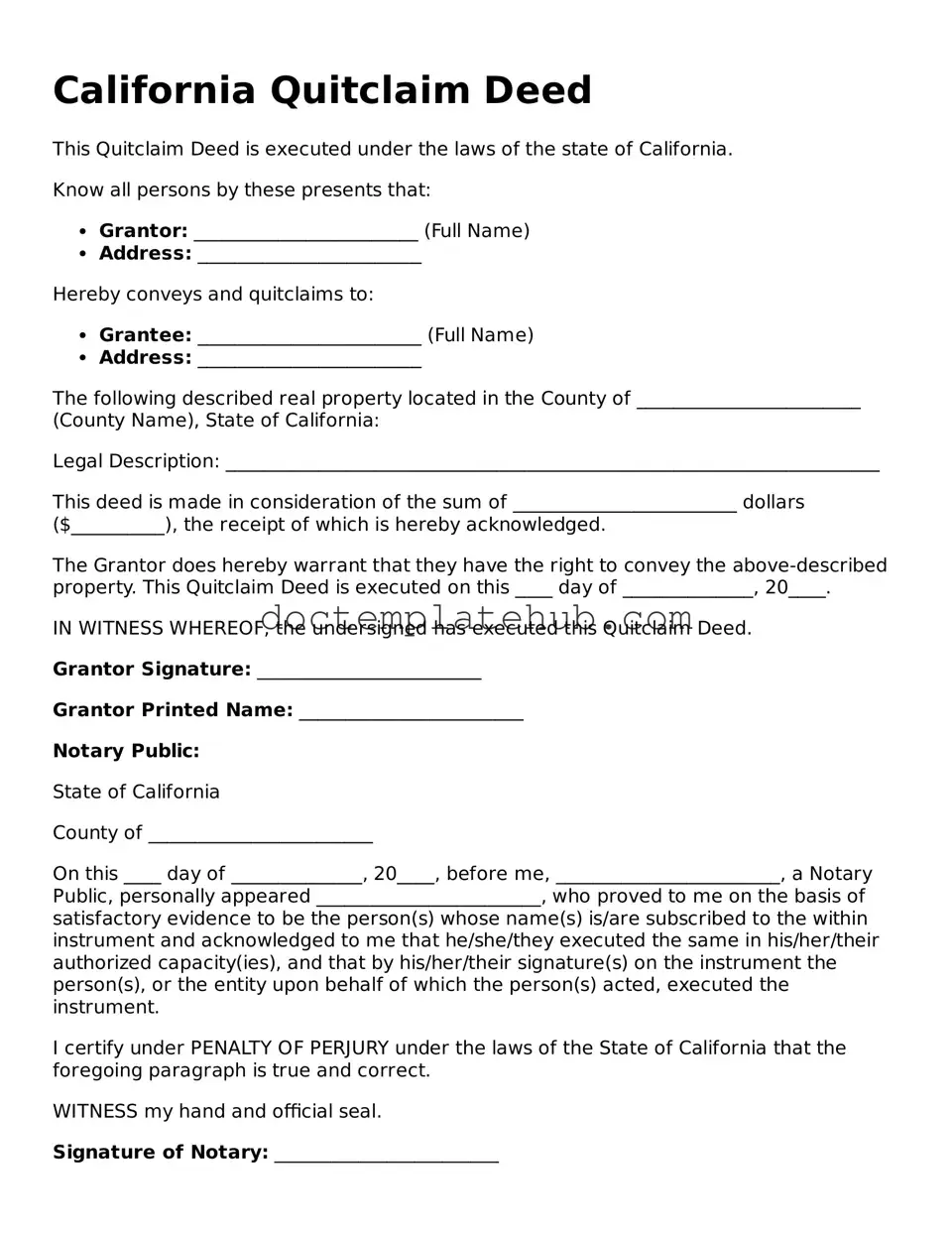What is a Quitclaim Deed?
A Quitclaim Deed is a legal document used to transfer ownership of real estate from one person to another. Unlike other types of deeds, a Quitclaim Deed does not guarantee that the person transferring the property has clear title. Instead, it simply conveys whatever interest the grantor has in the property, if any. This makes it a useful tool in situations like divorces or transferring property between family members, where the parties trust each other and are aware of any potential issues with the title.
How do I complete a Quitclaim Deed in California?
To complete a Quitclaim Deed in California, you need to fill out the appropriate form, which can typically be found online or at legal stationery stores. The form requires basic information such as the names of the grantor and grantee, the property description, and the county where the property is located. After filling out the form, both parties must sign it in the presence of a notary public. Once notarized, the deed must be recorded with the county recorder's office to make the transfer official.
Are there any fees associated with filing a Quitclaim Deed?
Yes, there are fees associated with filing a Quitclaim Deed in California. These fees vary by county but generally include a recording fee. Some counties may also charge additional fees for specific services or for copies of the recorded deed. It's advisable to check with your local county recorder’s office for the exact amounts and any other potential costs involved in the process.
What are the benefits of using a Quitclaim Deed?
Using a Quitclaim Deed offers several benefits. It is a simple and quick way to transfer property ownership without the need for a lengthy legal process. This type of deed is particularly useful in situations where the parties know each other and trust that the transfer is legitimate. Additionally, it can help avoid complications that might arise from probate, as it allows for direct transfer of property upon the death of an owner, assuming the deed is properly executed.
Can a Quitclaim Deed be contested?
Yes, a Quitclaim Deed can be contested, but doing so may be challenging. If someone believes the deed was executed under duress, fraud, or without proper capacity, they may have grounds to contest it. However, because a Quitclaim Deed does not guarantee clear title, proving such claims can be complex. It is essential to gather evidence and seek legal advice if there are concerns about the validity of a Quitclaim Deed.
